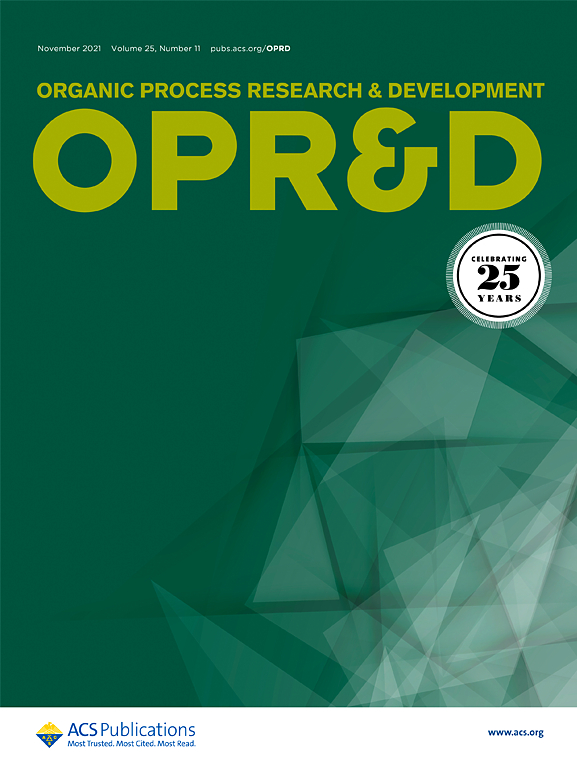Catalyst-Free, Scalable, Green-Light-Mediated Iodoamination, and Further Transformation of Olefins Under Continuous Flow Conditions
IF 3.1
3区 化学
Q2 CHEMISTRY, APPLIED
引用次数: 0
Abstract
We report the iodoamination of alkenes in continuous flow under metal-free, visible-light-mediated conditions with commercially available N-iodosuccinimide and protected amines. Unactivated and activated alkenes as well as Michael acceptors are amenable substrate classes for this process, allowing the synthesis of 1,2-iodoamines with a broad scope and in high yields (59–94%). The steadiness of the protocol is demonstrated in a continuous flow experiment over 4.5 h for the coupling of styrene, NIS, and N-tosyl-amine, which gave rise to 14 g (91%) of the iodoaminated product, corresponding to a productivity of 3.1 g h–1. Additionally, the direct conversion of the products without prior isolation into aziridines, enamines, amino alcohols, or azidoamines is possible, underscoring the synthetic value of this approach. Variation of the reaction conditions by adding typical impurities in reagents or solvents or changing the irradiation from green to blue light had a minimal effect on the yield, giving credit to the robustness of the process.

求助全文
约1分钟内获得全文
求助全文
来源期刊
CiteScore
6.90
自引率
14.70%
发文量
251
审稿时长
2 months
期刊介绍:
The journal Organic Process Research & Development serves as a communication tool between industrial chemists and chemists working in universities and research institutes. As such, it reports original work from the broad field of industrial process chemistry but also presents academic results that are relevant, or potentially relevant, to industrial applications. Process chemistry is the science that enables the safe, environmentally benign and ultimately economical manufacturing of organic compounds that are required in larger amounts to help address the needs of society. Consequently, the Journal encompasses every aspect of organic chemistry, including all aspects of catalysis, synthetic methodology development and synthetic strategy exploration, but also includes aspects from analytical and solid-state chemistry and chemical engineering, such as work-up tools,process safety, or flow-chemistry. The goal of development and optimization of chemical reactions and processes is their transfer to a larger scale; original work describing such studies and the actual implementation on scale is highly relevant to the journal. However, studies on new developments from either industry, research institutes or academia that have not yet been demonstrated on scale, but where an industrial utility can be expected and where the study has addressed important prerequisites for a scale-up and has given confidence into the reliability and practicality of the chemistry, also serve the mission of OPR&D as a communication tool between the different contributors to the field.

 求助内容:
求助内容: 应助结果提醒方式:
应助结果提醒方式:


